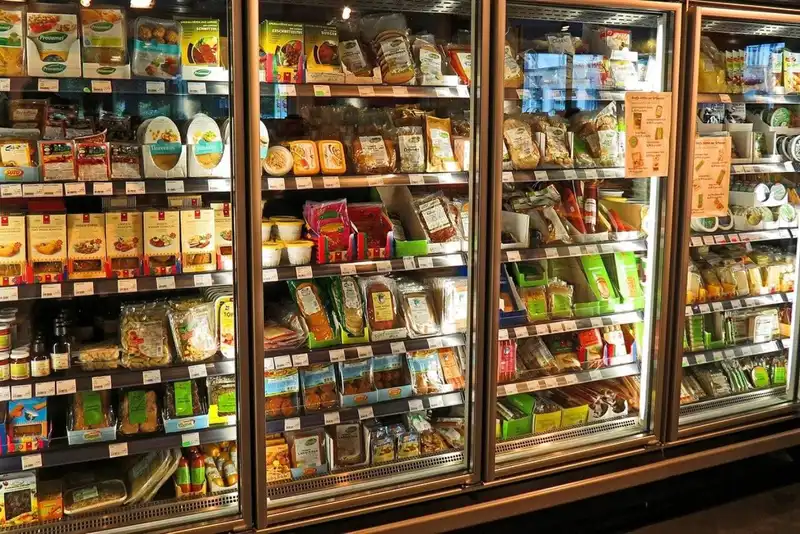Reading Food Products Labels
Different Types of Food Products

Food is used as fuel for the body but also takes it place as culinary traditions in different cultures. Different cooking styles and cuisines create different dining experiences. Here now are some of the different types of food products used as staples for most main dishes.
Vegetables
Vegetables are separated into different categories depending on the part of the plant meant to be eaten. The categories include-
- stem
- leafy
- podded vegetables
- root vegetables
- bulb vegetables
Root vegetables are the vegetables most eaten throughout various cultures. Potatoes are the most versatile of all the root vegetables. They can be fried, boiled, sauteed, mashed or made in the form of french fries. Vegetables are nutrient rich especially when consumed in their raw form with very little food processing.
Fruits
Fruits are high in vitamins, minerals and fiber. Depending on the region, different types of fruits are available fresh throughout the seasons. They can be classified as either tropical, citrus, berries, pomes (like apples), or pepos (melons). There are some fruits that most mistake for vegetables because they're used mostly in savory dishes. This includes avocados and tomatoes. Because fruits are so versatile, they can be included in the average person's diet morning, noon and night.
Grains, Legumes, Nuts, and Seeds
Grains include wheat, oats, rye, rice, millet and barley. Most cultures eat some form of grain throughout the day. Depending on the grain, it can be made into breads, oatmeal, tortillas, noodle or even cereals. Milled grains make the base of most pastries.
Legumes encompass the beans family, which includes chickpeas. They are a strong source of iron and protein. Nuts and seeds are very popular in Asian or European cooking. They are an excellent source of vitamin E and fiber, and can also enhance food dishes with extra flavor. Some seeds like the sesame or poppy seeds can be found on breads and bagels.
Meat and Poultry
Many food cultures include meat in the diet. Each region has their own preference for which cuts they prefer. In the West, beef and chicken are eaten most. Mediterranean regions eat more lamb and goat options.
Regardless of which type of meat or poultry is eaten, they all are a high source of protein. Some cuts of meat can be more fatty than others but they can be diced or minced to be used for stews. Other types of meat and poultry used include liver, heart, kidneys, or tongue of different animals.
Fish and Seafood
Seafood is another notable food category. It includes any fish, squid, octopus or shellfish like lobster and crab. Most fish types are caught fresh at sea but others like salmon, carp or oysters can be fish farmed.
Fish is a nutritious source of omega-3 fatty acids and vitamins D and B2. It also is a great source of calcium and is rich with minerals like iron and potassium. The American Heart Association has recommended including fish as part of a healthy diet at least twice per week.
Dairy Food Group
Dairy is a milk product that can come from cows, goats or sheep. The way milk is processed is called pasteurization and it is the method in which the raw milk becomes an edible food product like yogurt or cheese.
Dairy is an excellent source of calcium and vitamin D. The USDA and the National Institutes of Health (NIH) recommend dairy for bone health. Those who are lactose intolerant find their dairy through different sources.
Eggs
Eggs are often lumped in with either dairy or protein but they are actually their own food group. This high protein, versatile food is low in calories and provides many benefits for bone health and brain development. Sometimes the egg yolks can be a concern for high cholesterol, however they can be removed to leave behind the whites which are high in protein.
Why Food Products Labels Matter

Food labels are required by the FDA to let consumers know the ingredients that have been used to create the food product. With international trade on the rise it's harder to know which food producers are distributing the food. FAO and the World Health Organization (WHO) work in conjunction to ensure the global standards for food labels are met.
Here are six more reasons why food product labels matter-
1. Health - Labels list the fundamentals of the food product including calories, fats, and other ingredients. This information is specifically important for health reasons. For instance, those with heart disease or diabetes can't eat certain types of food. The labels help to monitor the intake of salt, sugar, or saturated fats to maintain a healthy diet.
2. Safety - Warning labels list important information on how to store and use a product. Each year over 600 million people have become ill from food poisoning. The labels dictate instructions for cooking, prep, and storage methods that need to be followed to keep food from becoming contaminated with bacteria or spoiled.
3. Stops counterfeiting - There is actually such a thing as food fraud and labels help to deter it. Without the labels, food sellers could make false representations on the packaging which misleads consumers and can cause a host of problems. When food is purchased the consumer should be able to rest easy knowing that the food product is actually what the label says it is.
4. Reveals possible allergens - Some people are allergic to certain types of foods. Having a list of ingredients on the label will let them know whether the food product is safe to eat or not. For instance, many food processing plants will manufacture different products near each other. Some spillover is possible. That's why some food product labels will be right out on the front of the package stating that the food may have come in contact with nuts or fish. This lets those with allergens know what to avoid.
5. Reduces waste - The date on food labels is just as important as the ingredients list. It lets consumers know how long a product can last before it is no longer safe to eat. This is very important data for perishable items like dairy. If food is expired and is eaten it can cause food poisoning. Markets also use the sell by date to know which foods need to be removed from shelves. The practice keeps everyone safe.
6. Supports local - Some labels indicate the origin of the food source. For example, Darjeeling tea comes from India; Colombian Coffee is in fact from Columbia but Kona Coffee is a product from Hawaii which is in the United States. In a combined study by the FAO and EBRD they found products that noted the geographic indication increased the price by up to 50 percent. Some consumers look to labels to know if their food is locally sourced. they link the quality of the product to its geographical origins and usually stick with their favorites.
Conclusion to Food Products
- Food products sourced from animals, birds and some seafood can be a rich source of protein which is an important nutrient for the body to build and repair cells.
- Animal meats like beef and pork are consumed the mos throughout the United States. Where poultry, lamb and other animal products are consumed in different regions.
- Milk plays an important role in calcium delivery for the average diet. many people's diet. Other than drinking milk it can be in the form of other dairy products like cheese, yogurt, and butter.
- The FDA requires that food products be labeled with clear ingredient lists so the consumer knows exactly what they're purchasing.





